Barcelona 2018/19 season went from glory to failure within a couple of games. At one point towards the end of the campaign, only three games stood between them and a third treble in the club’s rich history. All they had to do was hold onto a 3-0 lead against Liverpool at Anfield and beat Valencia in the Copa del Rey final.
In the end, they did neither of those things as both teams humiliated the Catalans, putting a large stain on the team and the coach himself. But Ernesto Valverde prevailed despite the masses calling for his sacking and the underwhelming results in Europe.
With that in mind, this tactical analysis will aim to give you the tactics Barcelona might use in the 2019/20 season and what changes are expected to happen if Valverde wants to finally turn his fortune around and with it, the fans as well.
2018/19 overview in numbers
It’s difficult to say what exactly went wrong in Barcelona’s latest campaign but saying everything did come pretty close to the right answer. Things proceeded smoothly, as they usually do, up until the breaking point in the latter stages of all competitions. La Liga was secured with fixtures to spare and Valverde finally had no excuse when it came to the Champions League.
But the Roma debacle got its sequel at Anfield as the Reds tore through a scared Blaugrana in a match that very much felt like a Sunday league clash. Or rather, it was professional adults toying with children. So mentality will very much play a huge role if this European curse is to be lifted from the Catalans but defensive fragility is also pretty much up there on top of the list.
Barcelona’s right-back problem has been a topic of hot debate ever since Dani Alves left the club and Jordi Alba on the left, despite an outstanding season in all regards, experienced a big dip in form at the worst possible time in the campaign. On average, they let 10.64 shots per game and conceded 0.98 goals. This was a dip from the 10.12 and 0.72 from the season before.
Likewise, they allowed their opposition 1.3 xG on average, while in 2017/18 that figure was as low as one. Even though the differences don’t seem to be big, it showed in the final statistics at the end of the season – 36 goals allowed in La Liga compared to 29 in the prior campaign and also two wins less and two defeats more.

Note, as well, that higher defensive numbers don’t necessarily mean the team was better in that department. It could also suggest they simply had more to do and there was a greater need for, say, clearances, fouls and duels, in general.
But the problems were not only in the defensive spectre of things.
When attacking, Barcelona predominantly use the left wing with the right often ending up completely isolated and unused for most of the games. This happens due to Messi cutting inside and no one to continuously overlap and provide width, in contrast to the left where Alba does this on a regular basis.
Finally, the midfield has seen some better days and was sluggish and slow at certain times. And despite the accuracy rising just slightly from 89% to 89.5%, long passes, smart passes and through balls all experienced a drop in figures.

This, in turn, had a direct impact on the attacking numbers. While they very much retained their respective xG figures with just a slight drop, a certain decrease in aggressiveness can be seen when further dissecting stats like the tendency to rely on counterattacks more or engaging in duels less than before.
This comes as no surprise as the trio of Messi, Suárez and Ousmane Dembélé rarely engage in any sort of defensive duties and the team, therefore, defaults to a 4-4-2 system in which the press is not as intense nor as high as it used to be.

Next in this scout report, we’re going to take a look at some core tactics that are likely to be used, or rather, improved upon, and some of them might even be reinvented entirely.
The wing problem solved?
As we have already stated, Barcelona tend to be extremely one-dimensional when it comes to their attacking style of play. Messi is the obvious focal point together with Jordi Alba, and most of the times, it’s the duo combining that causes the most problems for the opposition.
But teams are starting to adapt to this and are doubling down on Alba, keeping two markers at bay for a potential overlap by the Spaniard. They can do this because the right side is rarely used in the wide areas for Barcelona.
Note in the example below how a fairly average course of action by Barca might look. Messi gets the ball wide and cuts inside, leaving his flank unused. This is usually a clear indication that the right-back has to slot in but with the lack of a true attacking full-back on that side, it often ends up being deserted.
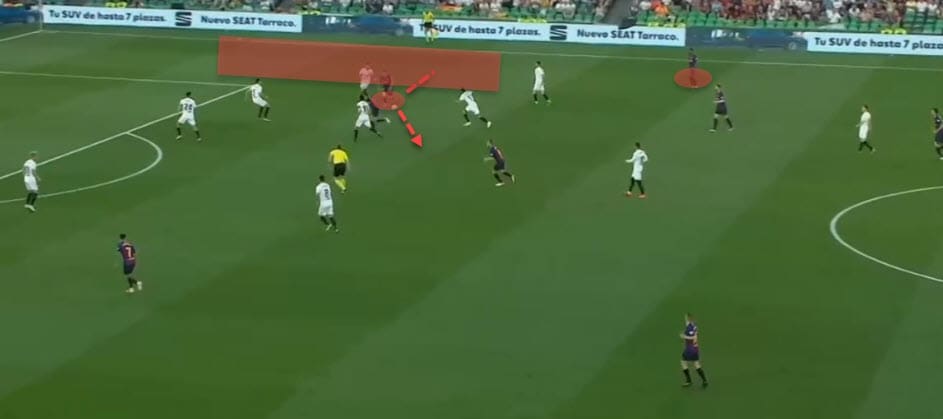
But looking at the 2019/20 season, there are still ways Valverde can fix this. The obvious one would be to put a natural winger on the right (Ousmane Dembélé) to keep the width, slot Messi into the false nine positions and have the third forward occupy the left. In this scenario, Luis Suárez would have to be benched for a more agile, versatile and athletic Antoine Griezmann.
And the Frenchman truly looks like a great solution to this glaring problem. Griezmann would be able to transition into the middle while Messi stays right behind him, which would give Alba the space on the left and all the while Dembélé would stretch the opposition on the right. If, however, Griezmann is used as a centre-forward, the problem would still be solved.
Messi is deployed as the right-winger who cuts inside leaving the right-wing empty but Griezmann’s movement is dynamic and he often slides to either flank when necessary, which we have already seen in his Barcelona debut.
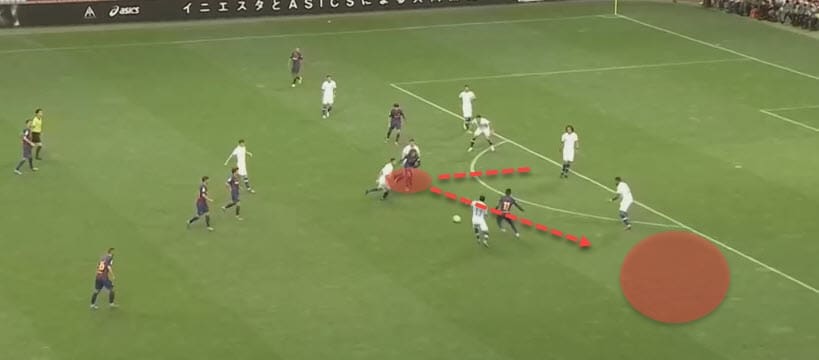

In theory, just with the incorporation of Griezmann, the attacking puzzle should be completed but its efficiancy still depends on the quality of midfield, which is also looking to have a strong backbone with Frenkie de Jong joining the team.
Midfield changes
Barcelona traditionally play with three midfielders and despite some occasional switches, it is almost certain they will continue to do so in 2019/20. With that in mind, the biggest change to the existing blueprint of their team will definitely be Frenkie de Jong.
The problem with their usual setup is that there is often no one to play progressive passes or simply to carry the ball forward and distribute it to the forwards. Instead, that task often falls on the shoulders of Lionel Messi who has to drop deep to receive the ball and then move it upfield.
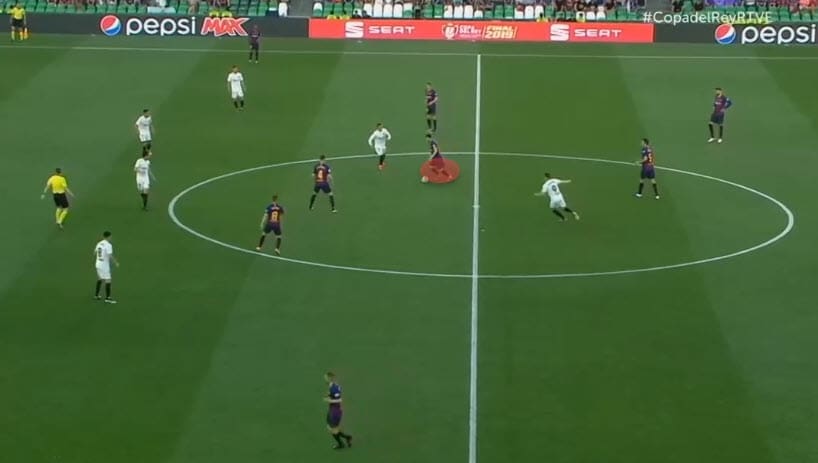
And how can the inclusion of the young Dutchman solve this problem? In theory, De Jong should assume this role as soon as possible and judging by past experience and his stats, this should be his second nature.
Below is a graph depicting the best progressive midfielders in the top five leagues and De Jong is highlighted. We can clearly see that this is his speciality and if he can replicate his numbers from Ajax at Barcelona, a huge burden could be lifted off of Messi’s shoulders.
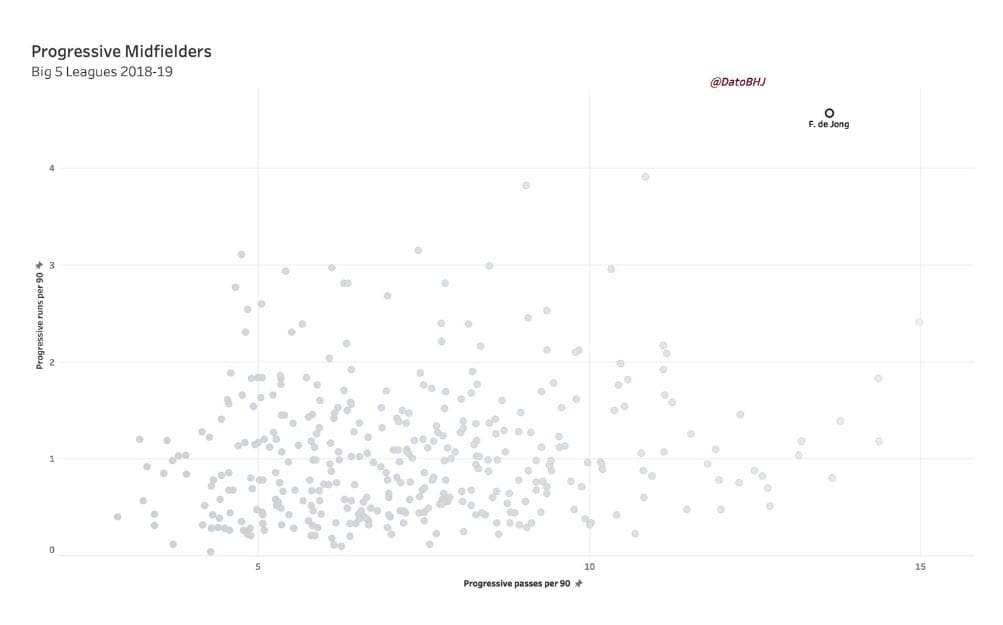
Ideally, De Jong will be deployed in a midfield three with Busquets and either Arthur or Ivan Rakitić. We have seen that he can play well alongside the Croatian, forming a double pivot and linking up to escape the press.
However, as the new season rolls in, it is likely that he will assume the more advanced role as he does tend to go forward quite often, and that would leave Arthur and Busquets to control things behind him. Of course, there is also the possibility that he overtakes Busquets as the team’s number one pivot but that will probably not happen at first. Over time – definitely.
Defensive issues
Apart from being more susceptible in their defence than the prior season, Barcelona have had one other glaring fault in their system – they crumbled under pressure and had no tools to counter it.
Sure, once upon a time the Catalans had probably the most press-resistant squad on the planet but times have certainly changed and now, teams are allowed too much freedom against the Blaugrana. This was most emphasised against Liverpool in the Champions League.
Messi and Suárez don’t need much introduction when we take into account their lethality but when it comes to defending, they mostly don’t exist. For that reason, teams could press Barcelona and pull their defensive line extremely high up the pitch without risk of a counter-attack.
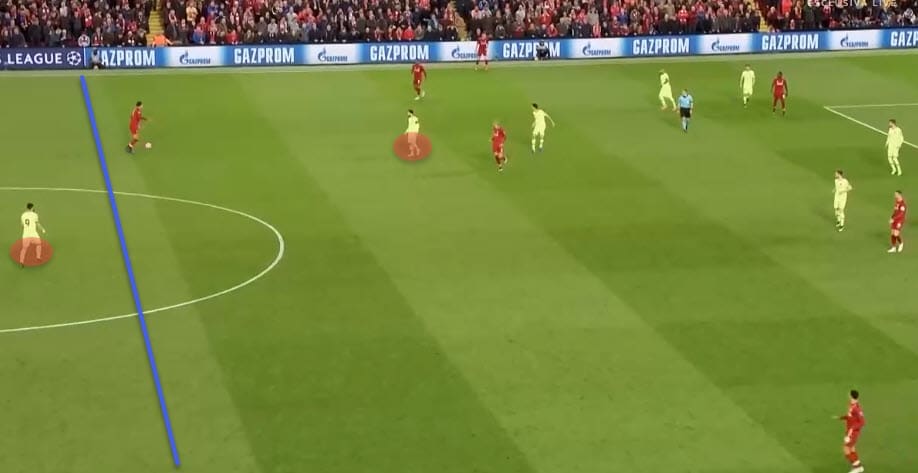
Neither Messi nor Suárez have the legs to lead the transition all the way from their own half and more importantly, do that repeatedly throughout the match. One other thing they were lacking is the aggressive pressing tactics. The pressing is usually initiated with the forwards but the aforementioned duo can’t participate in that kind of a system throughout the full 90 minutes.
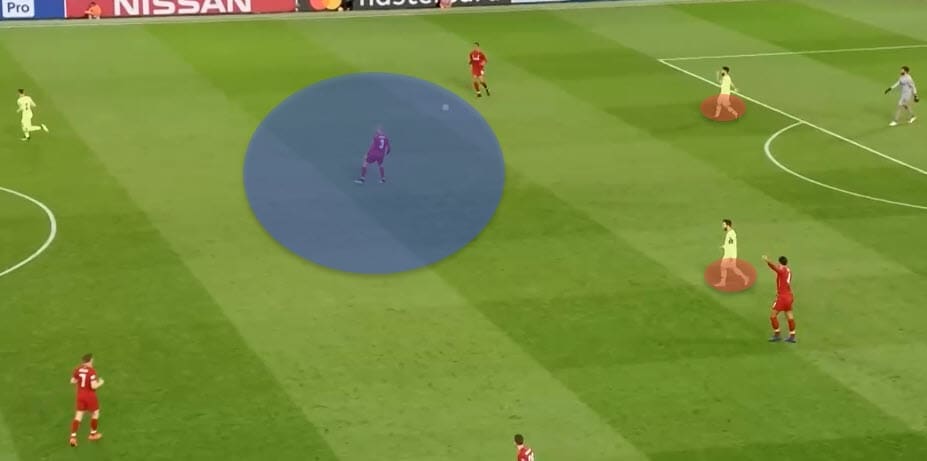
Barcelona would usually solve this problem, or rather they would try solving it, by relying on the midfielders to work more than usual, thus a bigger role was given to the likes of Arturo Vidal and Ivan Rakitić who could run all day and cover multiple positions in defensive transitions.
Looking ahead, the inclusion of Frenkie de Jong and Antoine Griezmann should bring about a positive change. Both are well known for their exceptional defensive work on the pitch and are used to doing it regularly and efficiently.
Barcelona should, in theory, experience a bit of rejuvenation in this regard as they will have more energy to both press and have a presence in transitions.
Conclusion
In terms of tactics, we should not expect revolutionary changes but rather improving the already implemented blueprint of their style of play. We can definitely expect them to go back to their roots with a systematic building up from the back and the usage of overlapping full-backs.
The biggest changes will arrive in personnel and they should bring a new take on an old style. Frenkie de Jong and Antoine Griezmann seem like the missing pieces of the puzzle that could, on paper, fill the voids that the Barcelona of 2018/19 could not.
With that in mind, here is an expected lineup with the strongest XI included with their possible substitutes.
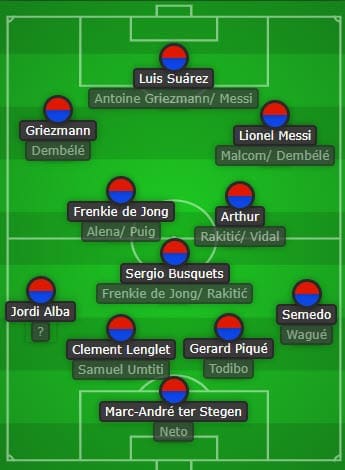
Of course, multiple variations can be extracted from such a squad with such great depth but both of the newcomers should slot into the first XI in no time, which was hopefully made a bit clearer in this tactical analysis.
The biggest question mark, however, will still be whether Valverde can escape that Champions League curse and break the gloomy mindset that’s been haunting this team for years now.
That still seems like the biggest weakness they might face in the upcoming campaign.
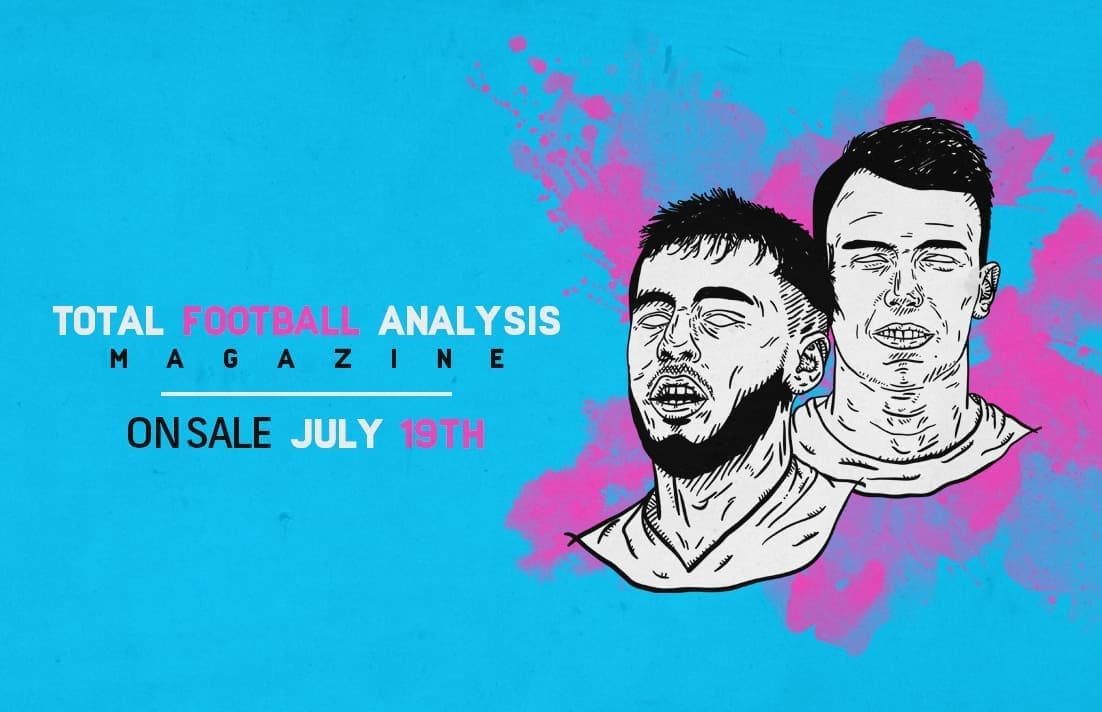
If you love tactical analysis, then you’ll love the digital magazines from totalfootballanalysis.com – a guaranteed 100+ pages of pure tactical analysis covering topics from the Premier League, Serie A, La Liga, Bundesliga and many, many more. Buy your copy of the July issue for just ₤4.99 here, or even better sign up for a ₤50 annual membership (12 monthly issues plus the annual review) right here.

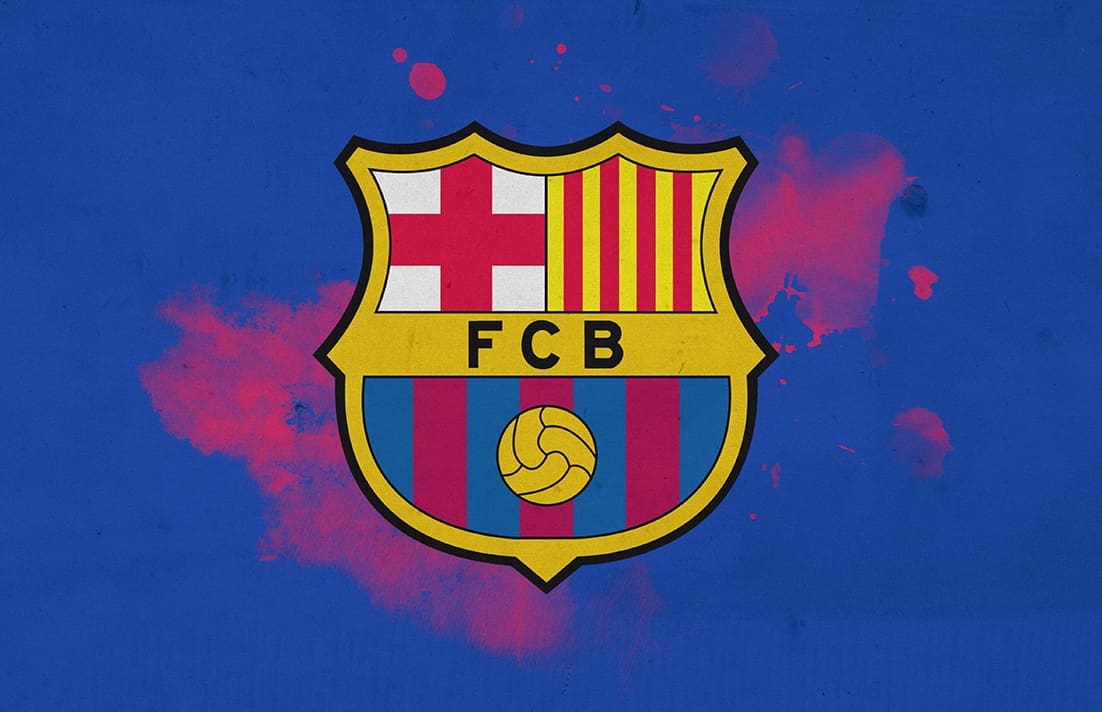




Comments